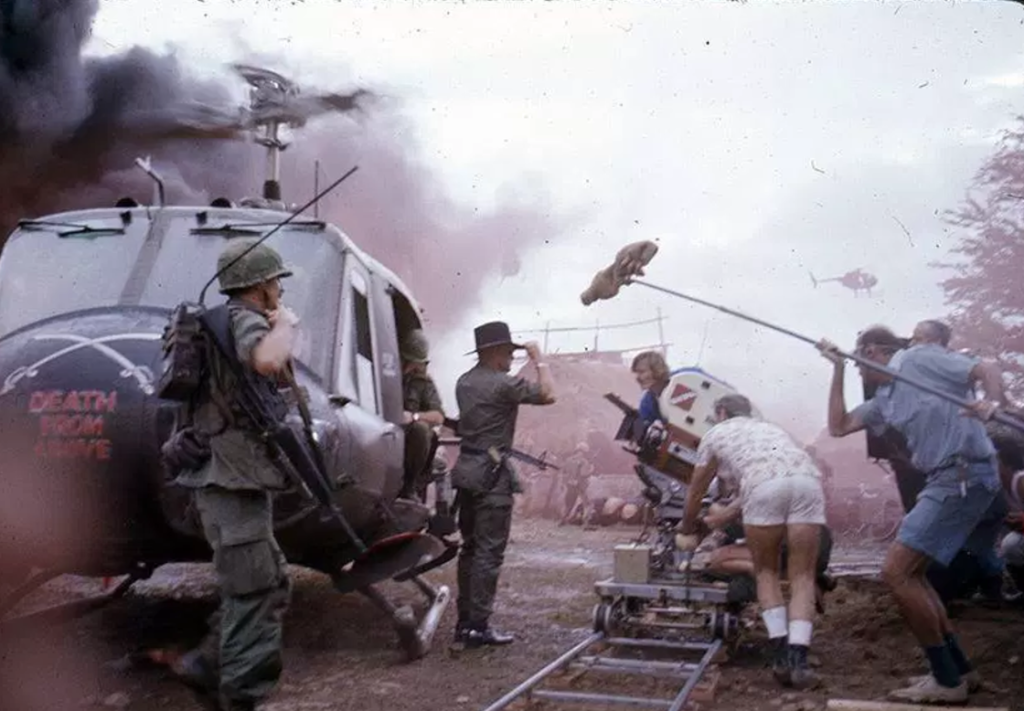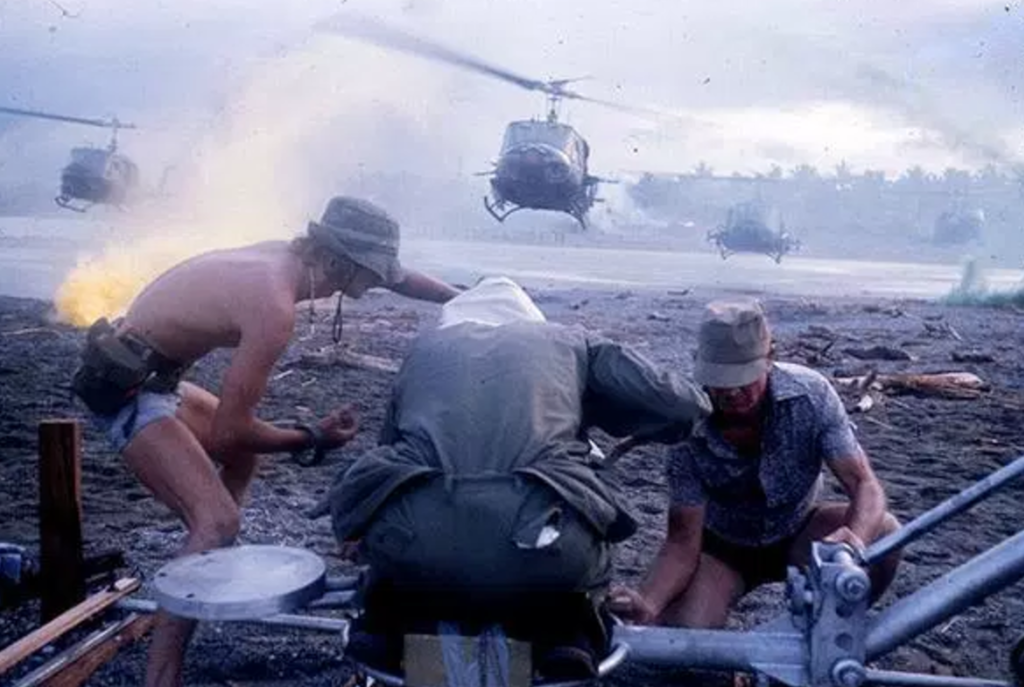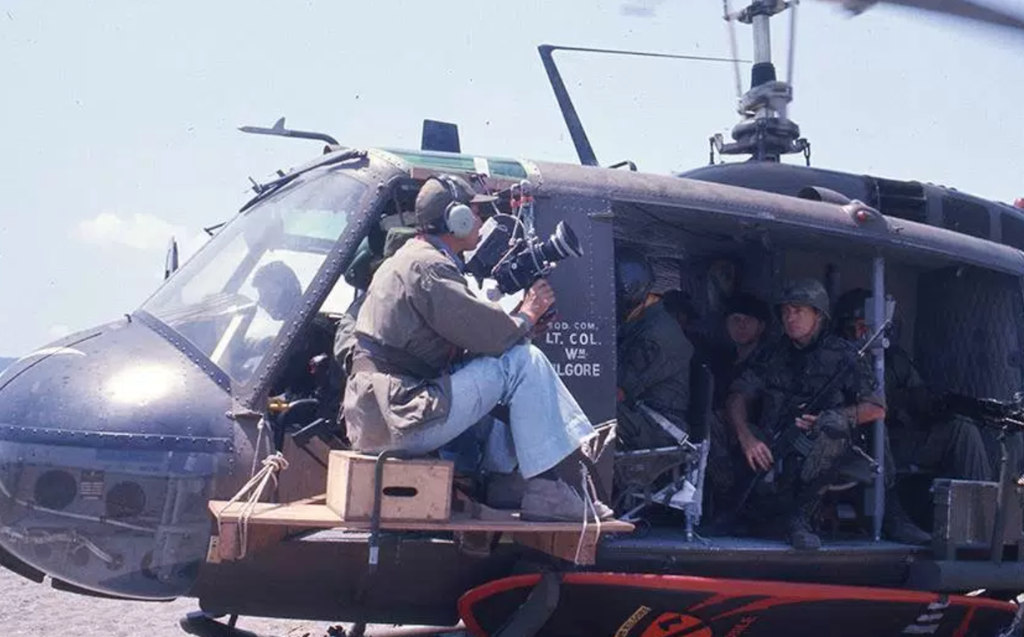Behind the Scenes Chaos: The Impossible Filming of Apocalypse Now
- dthholland
- Apr 7, 2020
- 5 min read

If you could encapsulate madness in a film, Apocalypse Now would undoubtedly be the crown jewel of cinematic insanity. The filming process itself was a warzone, not far removed from the brutal conflict it portrayed. A film that took over three years to make, helmed by a director who nearly lost everything—his health, his sanity, and his fortune—just to see his vision come to life. What was supposed to be a 14-week shoot ballooned into a nightmare of guerrilla filmmaking in the Philippines, where the cast and crew faced monsoon rains, political turmoil, tropical diseases, and the personal demons of its leading actors. In the words of director Francis Ford Coppola, Apocalypse Now was not simply about Vietnam; it was Vietnam. It’s a wonder the film made it to theatres at all. The behind-the-scenes chaos was enough to warrant its own documentary, but the final product? A masterpiece born out of cinematic hell.
Apocalypse Could Have Been Now
What many don’t know is that Apocalypse Now almost never saw Coppola's touch. If fate had played out differently, George Lucas could have been the one filming in Vietnam while the conflict was still raging. Lucas, who later became synonymous with space adventures, had a much darker vision for the film—shot guerrilla-style amidst actual gunfire. However, the absurdity of the idea, combined with the dangers, made it impossible for any studio to consider backing such a suicidal endeavour. So, the project sat in limbo until Coppola picked it up in the mid-70s. His vision? Something far grander, more artistic, and completely unhinged. By the time filming wrapped, there were no more illusions—this movie wasn’t just about a war. It was about madness.

The original plan was deceptively simple: a 14-week shoot in the Philippines beginning in early 1976. Of course, nothing went to plan. Instead, what unfolded was a living nightmare that would test the limits of every person involved. The problems began early when Coppola fired his original lead, Harvey Keitel, after just two weeks. Keitel, whose intensity didn’t match Coppola’s vision for the role of Captain Willard, was replaced by Martin Sheen—who was no saint himself, battling alcoholism and personal issues that would soon spill over onto the set.

When Sheen arrived, he wasn’t stepping into a well-oiled machine but a chaotic battlefield. Coppola, known for his methodical, almost obsessive attention to detail, was literally writing the script as they went along, a Herculean task that kept everyone on edge. Adding to the mayhem, the Philippine army, which had lent helicopters for the combat sequences, would frequently recall them to fight in real battles against anti-government rebels. The crew would stand by, ready to film one minute, only to watch the helicopters fly away the next. The irony wasn’t lost on anyone.

Partying in Paradise… and Then the Typhoon
Despite the madness of the workday, the crew found solace in the chaos by partying even harder at night. Vietnam vet Doug Claybourne, who was brought in as a production assistant, recalls the hotel being a non-stop rager. It was paradise by day, insanity by night. "We’d have a hundred beers lined up around the swimming pool," Claybourne said, adding that some people would even dive off the roofs into the water below. It was chaos—but it was the only way to cope with the intensity of the work.
Then came the typhoon. Nature itself seemed to conspire against Coppola and his dream of completing the film. The storm destroyed much of the set, bringing production to a grinding halt.

Coppola retreated back to San Francisco for a month, attempting to regroup and rethink his battle plan. Yet, even after the temporary pause, some of the crew had had enough and refused to return to the jungle. Martin Sheen, despite deep misgivings, did return, but he had an ominous sense of doom hanging over him. "I don’t know if I’m going to live through this," he confided to friends. His fear wasn’t entirely unfounded.

Enter Kurtz… And the Corpses
Filming eventually resumed, but Coppola’s greatest challenge was yet to come—working with Marlon Brando. Brando was cast as Colonel Kurtz, the rogue Green Beret who had gone AWOL deep in the jungle. When Brando finally arrived on set, everyone was shocked—he was enormous, tipping the scales at around 300 pounds. Coppola’s vision of Kurtz as a lean, hardened warrior evaporated instantly. How could he dress Brando in a military uniform when there was none that could fit him? Worse still, Brando hadn’t bothered to learn his lines or prepare for the role.
Coppola, ever the perfectionist, was forced to start from scratch. According to Dennis Hopper, the production came to a standstill for a week while Coppola literally read Brando the entire script aloud. Brando, for his part, decided to improvise most of his scenes, insisting on being filmed in shadow to hide his girth. The result is an enigmatic portrayal of Kurtz, veiled in darkness both literally and figuratively.

Then came one of the more macabre revelations on set: corpses. Real ones. Dean Tavoularis, the production designer, had acquired actual dead bodies to enhance the authenticity of Kurtz’s compound. When co-producer Gray Frederickson discovered this grim fact, he was horrified. It turned out the bodies had been procured from a grave robber who sold cadavers to medical schools. The police were called, and everyone on set had their passports confiscated until the situation was sorted out. The bodies were eventually hauled away—though no one was quite sure where they were dumped. In the end, the corpses that were supposed to be used as props were replaced with extras.

“We Had Access to Too Much Money… and We Went Insane.”
As if the turmoil wasn’t enough, Martin Sheen suffered a near-fatal heart attack in the middle of filming. Coppola, whose mental state was already fragile, convinced himself that he was to blame. At one point, the pressure drove him to have an epileptic seizure. He would later admit, “We had access to too much money and little by little, we went insane.” Dennis Hopper, who was playing a crazed photojournalist, wasn’t faring much better. His character was supposed to be unhinged, and by all accounts, he didn’t have to stretch too far to play the role. Hopper openly requested cocaine to help him get through his scenes, which, disturbingly, was supplied by the production.

But nothing compared to Coppola’s personal descent into despair. Faced with financial ruin, he had sunk millions of his own dollars into the production. Three times he declared that he was going to commit suicide. Yet, somehow, the film was completed. The madness that enveloped the production had birthed something extraordinary. When Apocalypse Now finally premiered in 1979, it was hailed as a masterpiece.

A Final Word on Madness
The chaotic production of Apocalypse Now has become legendary, almost as much as the film itself. In the years that followed, the stories from the set became as much a part of the film’s mythology as its characters. Dennis Hopper, true to form, almost missed the press screening because he was found naked in his hotel room, wearing only a cowboy hat and boots. And Marlon Brando? He refused to talk about the film ever again, still upset over unpaid royalties. But what Apocalypse Now left behind is more than just a film about war—it’s a testament to the extremes of human endurance, creativity, and madness.
It’s said that making the film was its own version of going up the river, deeper into the heart of darkness. Maybe that’s why it’s so powerful. It’s not just about Vietnam; it was Vietnam.




































































